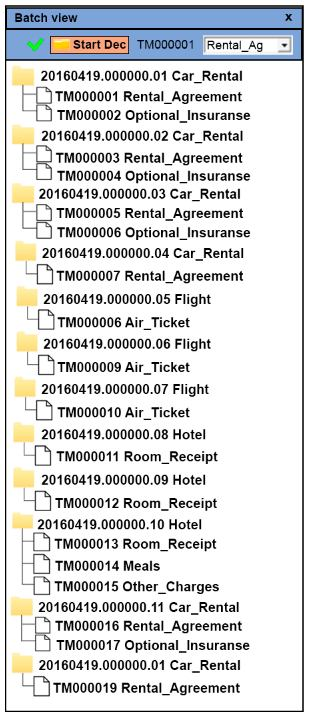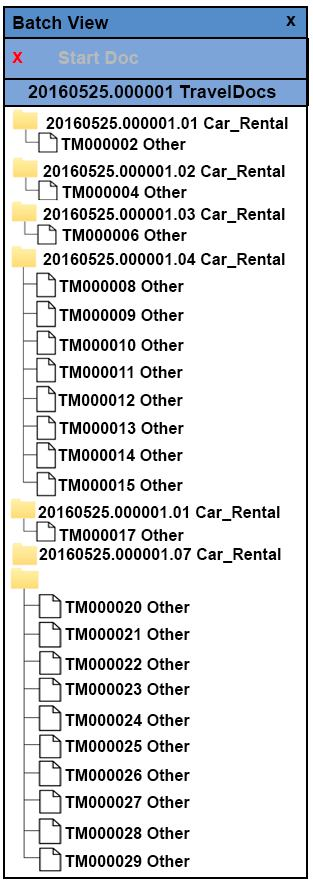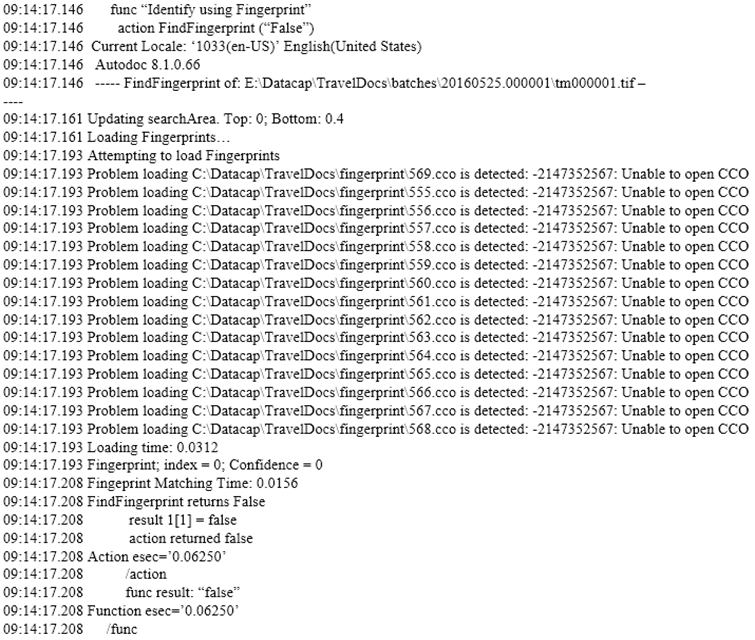Download IBM.C2070-994.PassCertification.2019-02-26.67q.tqb
| Vendor: | IBM |
| Exam Code: | C2070-994 |
| Exam Name: | IBM Datacap V9.0 Solution Designer |
| Date: | Feb 26, 2019 |
| File Size: | 2 MB |
Demo Questions
Question 1
An administrator is trying to troubleshoot a problem with actions running in a page id task through Rulerunner.
To get more information about the execution of the actions in Rulerunner, what configuration option should be modified?
- Change the service log level to 5 in the page id task setup.
- Edit the rrprocessor.exe.config file and set RRSLogSeverity=5
- Set the Level of details to All in the RRS log tab in Rulerunner Manager.
- In Datacap Server Manager’s Logging tab, check the RRSFullLogging checkbox.
Correct answer: C
Explanation:
As Rulerunner runs each action, it writes detailed logging information to a Rulerunner Service (RRS) log file (task_rrs.log). Rulerunner also generates an RRS log file whenever you run a task from Datacap Studio. If you want to generate an RRS log file for tasks that you run from the Datacap Web Client or for Datacap Desktop tasks, complete the following steps. Start Datacap Rulerunner Manager. Click the Logging tab. Click the RRS log tab and select the logging options that you want. References: https://www.ibm.com/support/knowledgecenter/en/SSZRWV_9.0.0/com.ibm.dc.develop.doc/dcadg420.htm As Rulerunner runs each action, it writes detailed logging information to a Rulerunner Service (RRS) log file (task_rrs.log). Rulerunner also generates an RRS log file whenever you run a task from Datacap Studio.
- If you want to generate an RRS log file for tasks that you run from the Datacap Web Client or for Datacap Desktop tasks, complete the following steps.
- Start Datacap Rulerunner Manager.
- Click the Logging tab.
- Click the RRS log tab and select the logging options that you want.
References: https://www.ibm.com/support/knowledgecenter/en/SSZRWV_9.0.0/com.ibm.dc.develop.doc/dcadg420.htm
Question 2
A company has a corporate policy to install applications on a non-C: drive so they installed IBM Datacap on the E: drive on all machines. Rulerunner is configured to process PageId, Profiler and Export steps. While testing the OOTB TravelDocs application, the VScan step in DcDesktop creates batches successfully.
Rulerunner picks up the job from PageId step, processes it to the Profiler step, which also processes it. However, instead of ending up on the Verify task when tested on the C: drive, the batches all end up in FixUp with pages set to Other when tested on the E: drive (see following screenshots for examples).


Which log file would show the following clue as to why and what needs to be done to resolve the issue so that the batches do not end up in Fixup?

- profiler_rrs.log – travelDocs.app needs to be updated to with the fingerprint path
- pageid_rrs.log – fingerprint database needs to be updated with the path to the fingerprints
- vscan_rrs.log – user requires read+write access to the batches folder and fingerprints folder
- fixup_rrs.log – user requires read_write access to the batches folder and travelDocs.app needs to be updated with the fingerprint path
Correct answer: B
Explanation:
The X_rrs.log, where X is the name of the task. The file is in the batch folder of the application (for example, C:\datacap\TravelDocs\batches\20130924.00001\pageid_rrs.log), and contains information about actions that are completed by the Rulerunner engine.Something that is fairly common, look in your fingerprint database to the Template table. In there, for the .tif and .cco file of every fingerprint there is a path stored there. You may need to do a search and replace to make sure the path is correct and pointed to your shared fingerprint directory. References: https://www.ibm.com/support/knowledgecenter/en/SSZRWV_9.0.0/com.ibm.dc.admin.doc/dclog002.htm The X_rrs.log, where X is the name of the task. The file is in the batch folder of the application (for example, C:\datacap\TravelDocs\batches\20130924.00001\pageid_rrs.log), and contains information about actions that are completed by the Rulerunner engine.
Something that is fairly common, look in your fingerprint database to the Template table. In there, for the .tif and .cco file of every fingerprint there is a path stored there. You may need to do a search and replace to make sure the path is correct and pointed to your shared fingerprint directory.
References: https://www.ibm.com/support/knowledgecenter/en/SSZRWV_9.0.0/com.ibm.dc.admin.doc/dclog002.htm
Question 3
A developer has created a new custom action using the IBM Datacap V9.0 and V9.0.1 custom action DDk.
Which of the following is required to install and use the custom action in datacap?
- Put the DDL in the RRS folder.
- Copy the DLL anywhere on the system and register it with RegAsm.
- Put both the RRX file and DLL in the RRS folder and register the DLL.
- Out the RRX file in the RRS folder and the DLL in the dcshared\Net folder.
Correct answer: A
Explanation:
Only the built DLL file is placed in the IBM Datacap installation directories. Do not place the RRX file in the Datacap installation directories; the RRX file is already imbedded within the DLL. Procedure To deploy custom actions:Choose one of the following routes: To make the custom actions visible to a single application, place the DLL in the RULES directory of that application. For example, if you take this route, instead of placing the DLL in Datacap\dcshared\NET folder, you must place dcsmart.dll and irrx.dll into the Rules folder as well. To make the custom actions visible to all applications, place the DLL in the RRS directory. The default location is C:\RRS. Do not register the DLL. References: https://developer.ibm.com/answers/questions/364945/how-to-deploy-custom-actions/ Only the built DLL file is placed in the IBM Datacap installation directories. Do not place the RRX file in the Datacap installation directories; the RRX file is already imbedded within the DLL.
Procedure
To deploy custom actions:
- Choose one of the following routes:To make the custom actions visible to a single application, place the DLL in the RULES directory of that application. For example, if you take this route, instead of placing the DLL in Datacap\dcshared\NET folder, you must place dcsmart.dll and irrx.dll into the Rules folder as well.To make the custom actions visible to all applications, place the DLL in the RRS directory. The default location is C:\RRS.
- Do not register the DLL.
References: https://developer.ibm.com/answers/questions/364945/how-to-deploy-custom-actions/






